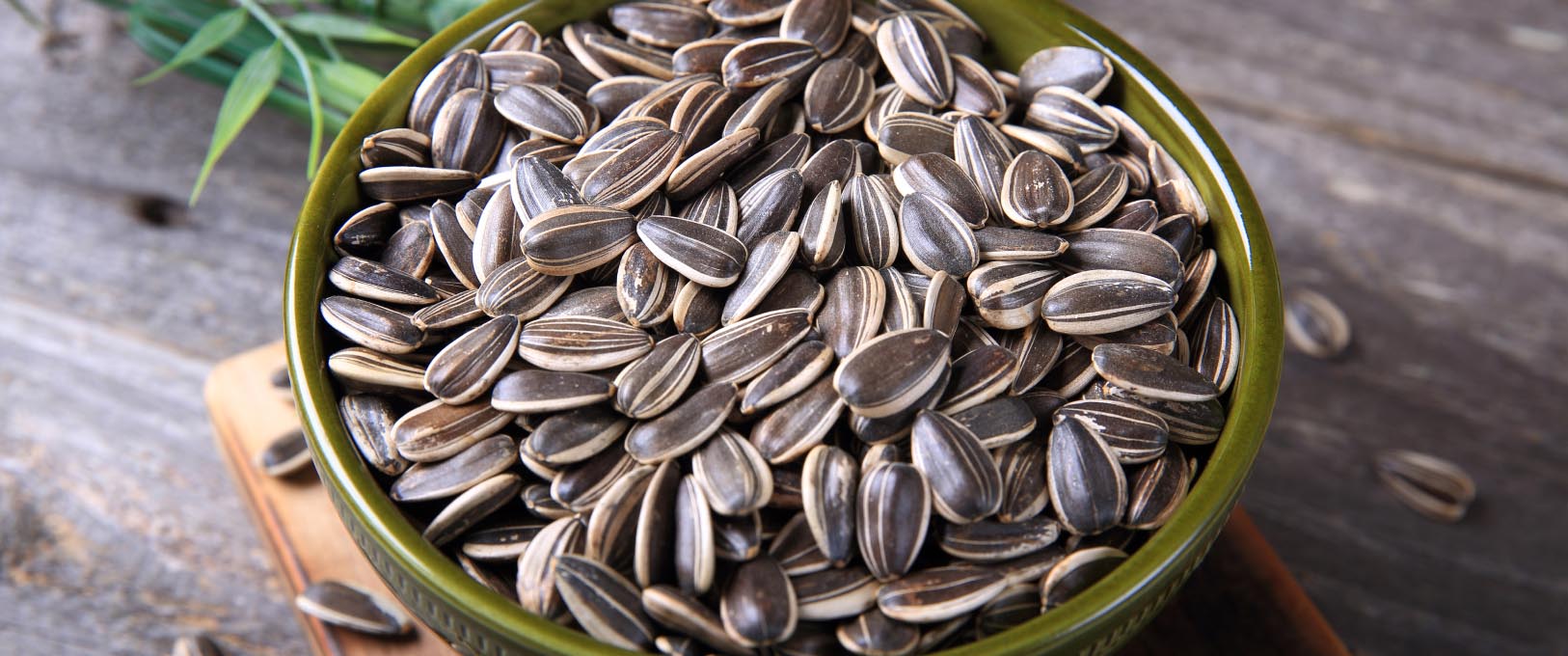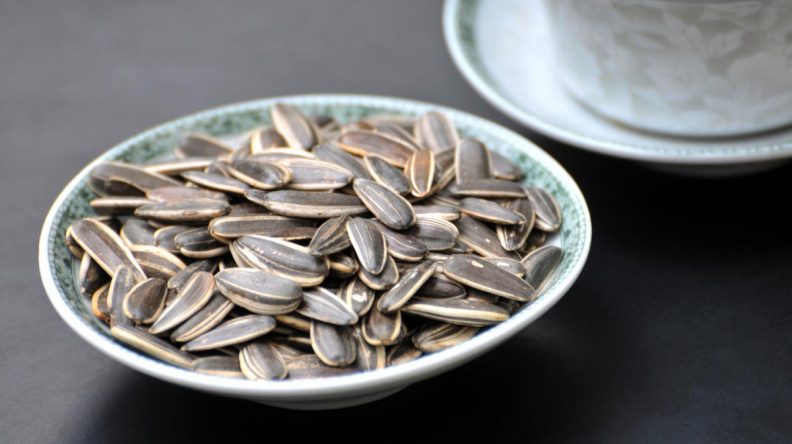How and when to plant sunflower seeds
Sunflowers are easy to grow provided that they have the right set of conditions. They require plenty of direct sunlight to thrive but also protection from the wind. Amazingly, young sunflower plants will turn their head to face the sun to increase UV absorption and at the same time shield their more sensitive stalk.
For planting, it’s important to have well drained soil for best results. A soil condition range of between pH level 6.0 and 7.5 is perfect. The most important thing to remember, however, is that sunflowers need at least 6-8 hours of sunlight each day. That’s a lot of exposure!
The best time to sow sunflower seeds is during Spring or early summer because that is when the soil is starting to rise in temperature. Following that, you can expect to begin harvesting after around 10 weeks.
Tip: Mix compost into your soil to boost the nutrient level prior to planting.

How and when to harvest sunflower seeds
Sunflower seeds can be harvested 10 weeks after they’ve been planted. To access them, you’ll want to let the flower dry on or off the stem until the back of the head turns brown and the seeds look plump and somewhat loose. Cut the head off the plant (approx. 6 inches below the flower head) using sharp pruners and place in a bucket or container to catch any seeds that fall loose. Take the sunflower head in your hand and remove the seeds by rubbing over the seeded area. Alternatively, you can use a fork or rub the head of the sunflower across a washboard.
How to eat sunflower seeds
Looking to add some crunch to your next meal? Sprinkle sunflower seeds throughout your masterpieces for a great texture and a nutty flavour that is sure to go down a treat. People have been using sunflower seeds in muesli and trail mix for years because they are tasty, healthy and convenient. You’ll also find them in bready pull-a-parts, fruit loaves, salads, curries, burger patties and much more. The oil from sunflower seeds is also a staple inclusion in many kitchens because it provides a unique flavour and smoking point for cooking.
JC’s Tasty Recipe Ideas
Check out these recipe ideas and you’ll soon be cooking up a storm with Sunflower Seeds.
Sunflower Seed Pesto
If you love a delicious pesto sauce, then this recipe won’t disappoint. This rich and decadent blend includes all of the classic ingredients but comes with a twist – sunflower seeds instead of pine nuts. Add our sunflower seed pesto to pasta dishes, meat dishes and cheese boards that need a little extra flavour.
Ingredients:
- ½ cup raw Sunflower Seeds
- 1 cup fresh basil
- 1 garlic clove
- 1 teaspoon finely grated lemon zest
- 1 tablespoon lemon juice
- Salt
- ¼ cup olive oil
- 2 teaspoons honey
Directions
Preparation is important with this recipe so you’ll want to thoroughly rinse the sunflower seeds and put them in a bowl or jar so you can soak overnight at room temperature.
Drain and rinse the seeds and you’ll be ready to go.
Next, purée sunflower seeds, basil, garlic, oil, honey, lemon zest and lemon juice to create a smooth consistency.
Add salt to taste and enjoy your delicious and healthy sunflower seed pesto in any way that you like.
Tip – feel free to add water if your pesto is too thick. You can also add ingredients such as parmesan cheese for extra flavour.
Breakfast Muesli Bowls
When rushing in the morning, there’s nothing better than knowing that you already have breakfast prepared. That’s why our muesli bowls are a great idea. They can be prepared well in advance and will give you all the energy that you need to kick some serious goals. Expect plenty of crunch with each and every bite.
Ingredients:
Directions
The beauty of this recipe is that the cooking process is quick and easy.
Preheat oven to 180°C and add honey and oil in a pot over medium heat. Stir occasionally and remove once combined.
In a large baking tray, pour oats, sunflower seeds, almonds, pepitas, walnuts and coconut and mix thoroughly with your hands.
Add your sweet mixture and stir until all of the ingredients are adequately covered.
Cook in the oven for up to 15 minutes or until golden brown, shaking the dish to avoid burning.
Allow to cool and then serve with almond milk or yogurt. Feel free to garnish with fresh fruit for bonus points.





